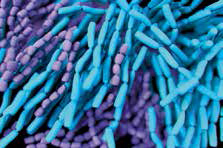
Dr. Attila Kovacs, Global Product Line Manager–Acidifiers, Biomin Holding GmbH
Organic acid use in piglet diets can be considered routine nowadays. Yet, high levels of organic acids in feed formulation take up a lot of otherwise useful space in the feed.
Replacing a portion of organic acids with a more powerful additive can create room to further enhance feed formulation or add more economical raw materials at no additional cost.
Swine producers apply organic acids to feed mainly to combat microbial and fungal contamination that causes the deterioration of feed and to decrease the pH in animals’ stomachs. Constant treatment with organic acids has the added benefit of preventing recontamination of feed, whereas methods such as heat treatment do not.
A number of factors support the rationale for dietary acidification for juvenile animals, especially weaning pigs. At weaning, piglets often register limited digestive and absorption capacity, typically due to insufficient hydrochloric acid and pancreatic enzymes secretion. Add on top of this, stress associated with the weaning process, sudden feed consistency and environmental changes – all of which can have a negative effect on the digestion, feed absorption and intestinal microflora of the piglets.
E. coli inhibition and beneficial bacteria promotion
Organic acids positively influence the growth of Lactobacilli in the gastrointestinal tract, which may competitively inhibit the proliferation of E. coli.
Various studies show that acidification of piglet diets at reported pH levels ranging from 4.36 to 5.79 can reduce the coliform and E. coli counts along the intestinal tract, decreasing scouring and mortality of piglets (Table 1). Organic acids positively influence the growth of Lactobacilli in the gastrointestinal tract, which may competitively inhibit the proliferation of E. coli and produces lactic acid and other metabolites which lower the pH or have an antimicrobial
Inclusion levels
To decrease the buffer capacity and feed pH levels, organic acids are typically used in the feed manufacturing process. These typically include formic acid, benzoic acid, lactic acid and acetic acid. Dietary acidification by a mixture of organic acids decreases the pH value of swine diets by 0.15 to 0.98 pH units, depending on the inclusion levels (varying from 0.5% to 3.0%) and diet composition. The inclusion level of the organic acids varies considerably in every feed manufacturing plant, depending also on the type of organic acids, the carrier and if the acids are added alone or blended.
Replacement of single acids in the diet
The feed formulation is a delicate process that must balance the nutrient requirements of animals at each production stage, the nutritional value of various feed raw materials, premixes, vitamins and minerals along with price and availability considerations. Space can be an issue, because trying to include all ingredients at an optimum level is not easy.
Piglet diets that also contain organic acids pose an additional challenge. One approach is to replace part of the single acids with a more powerful feed additive, thereby making space in the feed formulation in a cost effective way. Biotronic® Top line combines the unique Biomin® Permeabilizing Complex, a phytochemical, a selected blend of organic acids and their salts, fully utilizing a unique synergism in their mode of action. The Biomin® Permeabilizing Complex boosts the activity of the active ingredients and facilitates their entry in the cytoplasm by permeabilizing the outer membrane of Gram-negative bacteria.
Replacing 2 to 3 kg of a single acid with 1 kg of Biotronic® Top3 boosts the antimicrobial effect of the acid blend, reducing the bacterial load and improving animal growth performance. When looking to create space in feed formulation, it is generally recommended to use this 2:1 ratio to replace a single acid with Biotronic® Top line products.
Maximizing space in the practice
Several field and scientific trials have been conducted to replace benzoic acid and formic acid in different commercial formulations in piglet diets. In one recent case, a producer in Germany wanted to reduce the space taken up by the acids in the formulation by entirely replacing 6 kg per ton of a product based on formic acid salt (ACID) with Biotronic® Top3, provided that it could be done with no additional cost. For that trial, we doubled the recommended replacement ratio to 4:1, substituting the acid in question by Biotronic® Top3. The feed formulation also contained other acids that were not changed in either the initial or replacement diets.
The acid component of the replacement diet using Biotronic® Top3 cost 19% less than the initial diet using the product based on formic acid salt (ACID); a savings of €3.60/ton. After evaluating the growth performance in a field trial using 380 weaning piglets (Figure 1) it was clear that the replacement of the 0.60% of ACID with 0.15% of Biotronic® Top3 caused no change in growth performance, though it did generate an extra profit of €0.5 per piglet. The Biotronic® group had higher feed intake and lower FCR.
Room for more performance
The extra space that is spared in the feed formulation can be used to include other feed additives that can further enhance growth performance or support animal health. A mycotoxin deactivator or phytogenic feed additive figure among the most common ones paired with organic acids.
Having extra space also allows for greater flexibility regarding the inclusion level of the raw materials to optimize the energy or vitamin/mineral levels, or costs.
Conclusion
Organic acids are essential in the piglet feed, especially in the weaning period, but at the same time they can be a limiting factor for the feed formulation. Biotronic® Top line products can replace part of the organic acids in the formulation with additional economical benefits for the farmer. The modulation of the bacterial load in the intestinal tract together with a more efficient usage of the feed by the animal will not only cover the costs of the product, but bring also an added benefit.
